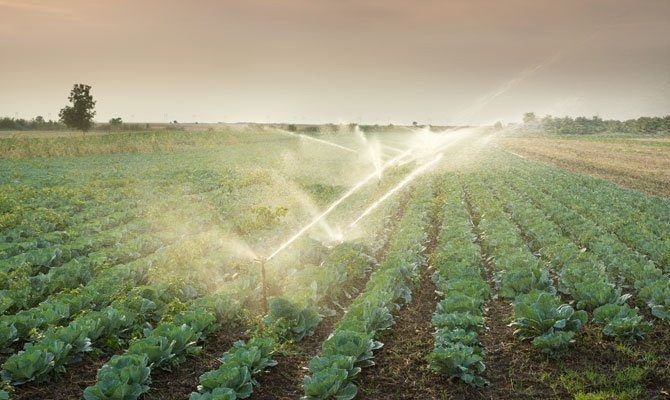Are Farmers Killing Our Water Supply?
This is one in a series of stories; visit The Daily Meal Special Report: Water for more.
When we talk about the impacts of industrial farming practices, the conversation has a tendency to gravitate toward topics like organic growing practices, the use of antibiotics in livestock, and genetically modified foods. But the impacts of industrial farming are far more complex, and we rarely consider the impact that large farms have on our water supply.
There is no set definition of an industrial or factory farm. In general, these operations raise large numbers of animals or crops with a very limited amount of land and other resources. They use labor-saving practices like spraying pesticides and harvesting with heavy machinery to do so. Farms that operate this way have a tremendous impact on our water; they often use water wastefully, and are the largest contributor the problem of its contamination. Not surprisingly, concerns about the dramatic and lasting impact of industrial agriculture on our ability to produce food sustainably continue to grow.;
A study conducted by the United States Environmental Protection Agency (EPA) found that 72 percent of the nation's rivers are contaminated by agricultural practices, 26 percent specifically by pesticides. In this report, the EPA concluded that "agriculture is the leading source of impairment in the Nation's rivers and lakes."
Then there's simple water waste. The United Nations Food and Agriculture Organization (FAO) published a paper on the topic of water waste by farms, which concluded that "agriculture is single largest user of freshwater resources, using a global average of 70 percent of all surface water supplies." The percentage is higher in the United States. The United States Department of Agriculture (USDA)'s 2012 report on Agricultural Resources and Environmental Indicators states that, in the United States alone, "agriculture is a major user of ground and surface water ... accounting for approximately 80 percent of the Nation's consumptive water use," or water that is not quickly returned to the environment. It is estimated that 60 percent of the water used by agriculture is wasted.[pullquote:right]
The majority of water wasted by industrial agriculture is squandered as the result of poor management and planning; farms that fail to tailor their practices on a case-by-case basis use far more water than they need to. For example, farms that use automatic flushing systems to clean out livestock stalls use 15 times more water than farms that monitor need and modify flushing accordingly. The same applies to irrigation systems: poor decisions about when to apply water and in what quantity contribute to the overuse of this valuable resource.
Industrial farms not only use too much water: they also have a significant impact on water quality because of fertilizer, pesticide, and herbicide runoff. One of the main problems is that large farms produce more animal waste than they can use, some as much as 335 million tons per year. This waste is stored in "lagoons" until it can be used as fertilizer. This excess of available fertilizer often leads famers to over-fertilize their fields, applying more fertilizer than the soil can absorb. When the soil is saturated, the excess fertilizer runs off into nearby bodies of water or seeps into wells and other sources of groundwater. Fertilizer introduces phosphorous and nitrogen into water, both of which encourage plant growth. While that may be good for a farmer's fields, it's not healthy for our water supplies; excess phosphorous and nitrogen encourage what is known as algal bloom. This excess underwater plant growth can affect the water's pH balance, making it undrinkable. Fertilizer also introduces ammonia, which can be converted into harmful nitrates, into our water. Drinking water with high nitrate levels has been linked to a number of human health concerns, including some that are fatal in infants. And, depending upon how an animal was raised, fertilizer runoff can introduce harmful pathogens and pharmaceuticals into drinking water as well.
Much like fertilizers, pesticides and herbicides are often applied to fields in excess, causing them to seep into groundwater or run off into nearby bodies of water. But chemicals sprayed on fields can also be carried by the wind, contaminating bodies of water hundreds of miles away.The majority of the water-related problems created by industrial farms come from mismanaged agriculture: poorly timed and applied irrigation water, fertilizer, and pesticides. Together they waste and degrade our already scarce water supply. With more than one fifth of the world's population living in water scarcity, it is critical that we seek new and innovative solutions to the problem of agricultural water waste and contamination. The United States Agricultural Act (often referred to as the "Farm Bill") of 2014 allocates just 6 percent of its funds to conservation, and only a limited amount of those conservation dollars will be dedicated to water.
Here are a few things you can do to help: Write a letter to Congress letting them know that you think more government dollars should be allocated to the conservation of water. Support small, local farms that use responsible methods to produce food. Purchase foods that require less water to grow; this means eating more plant-based foods.
